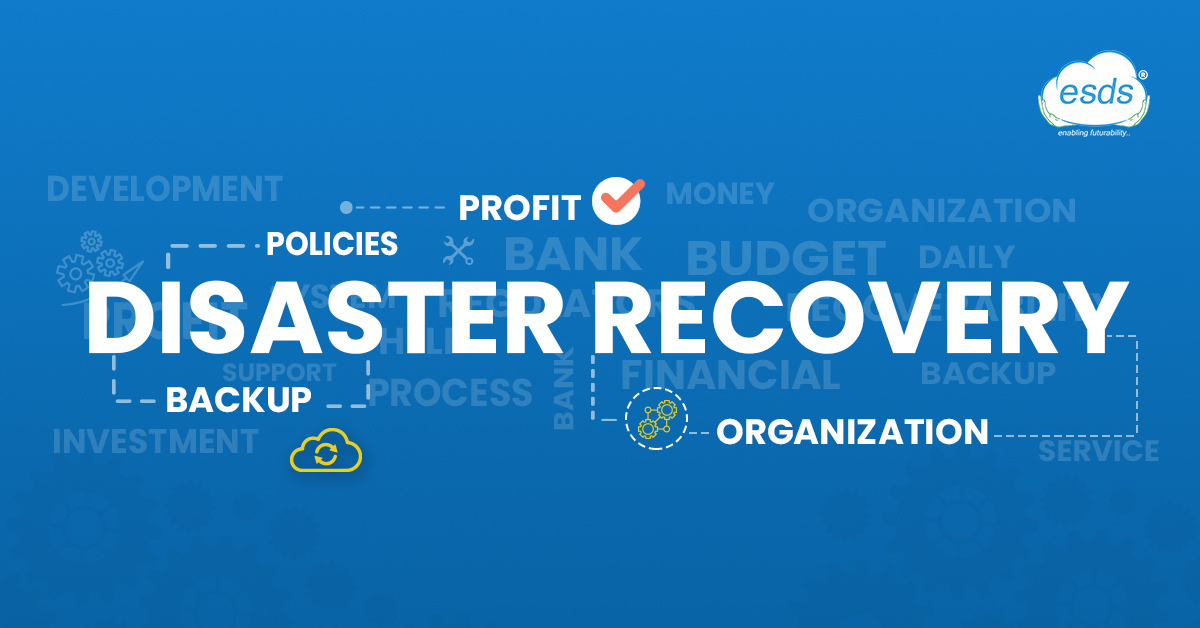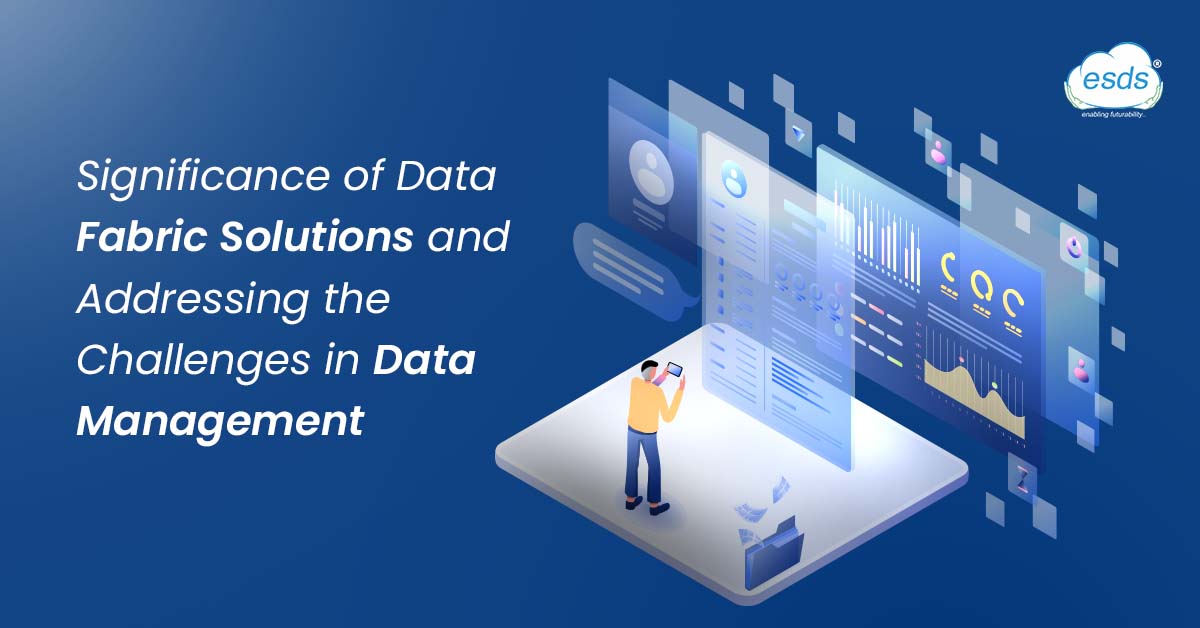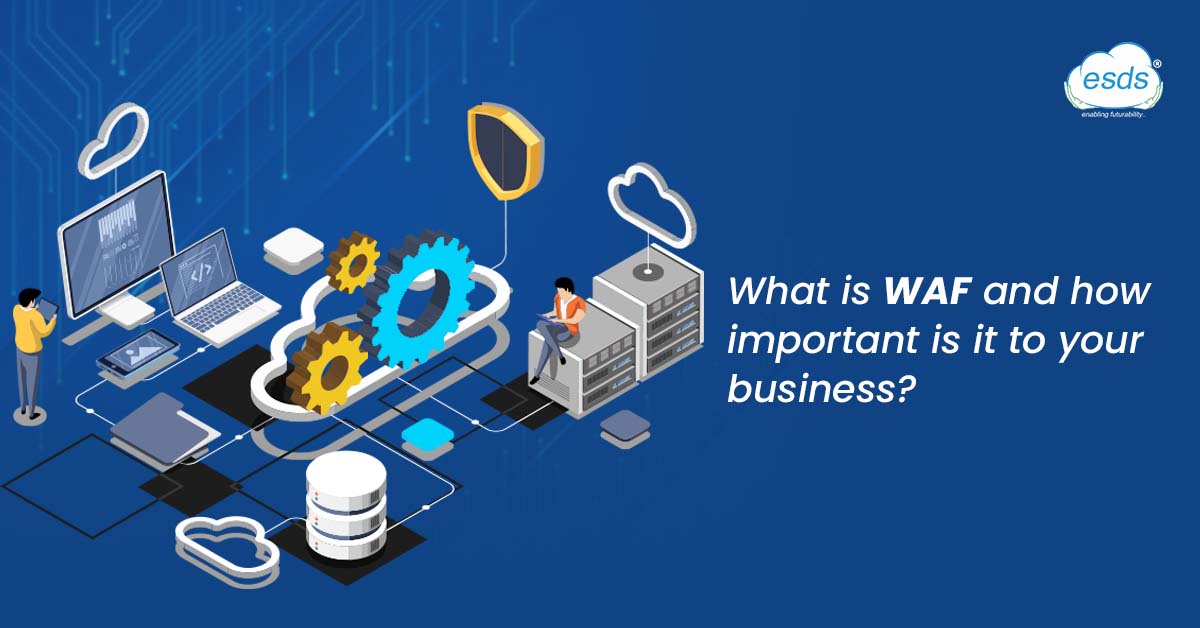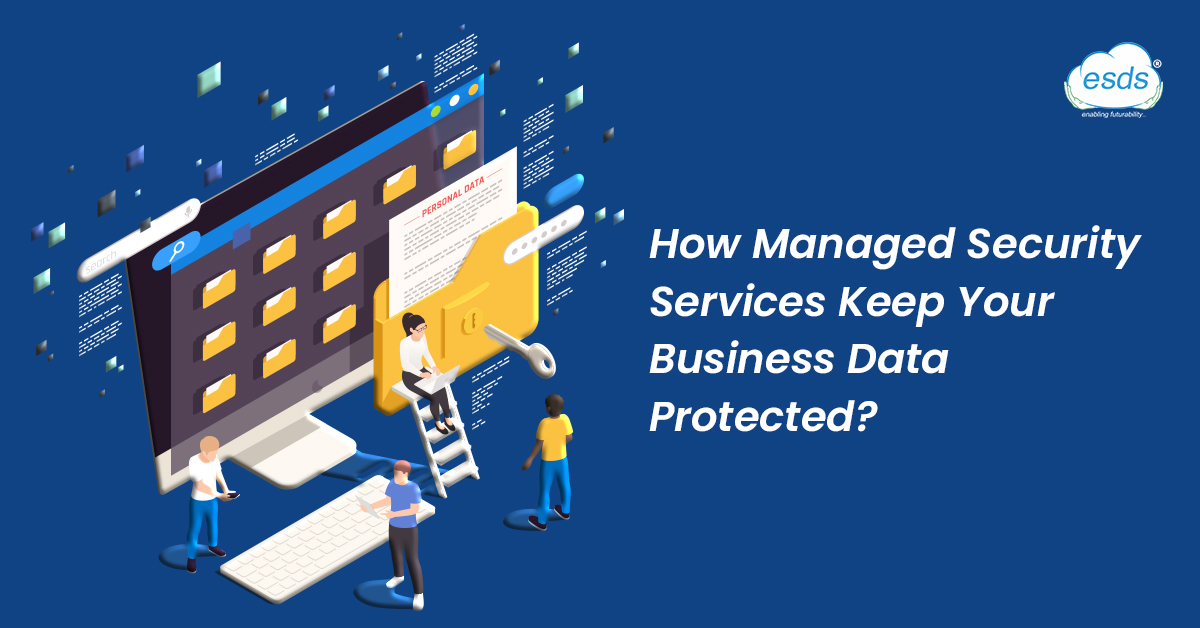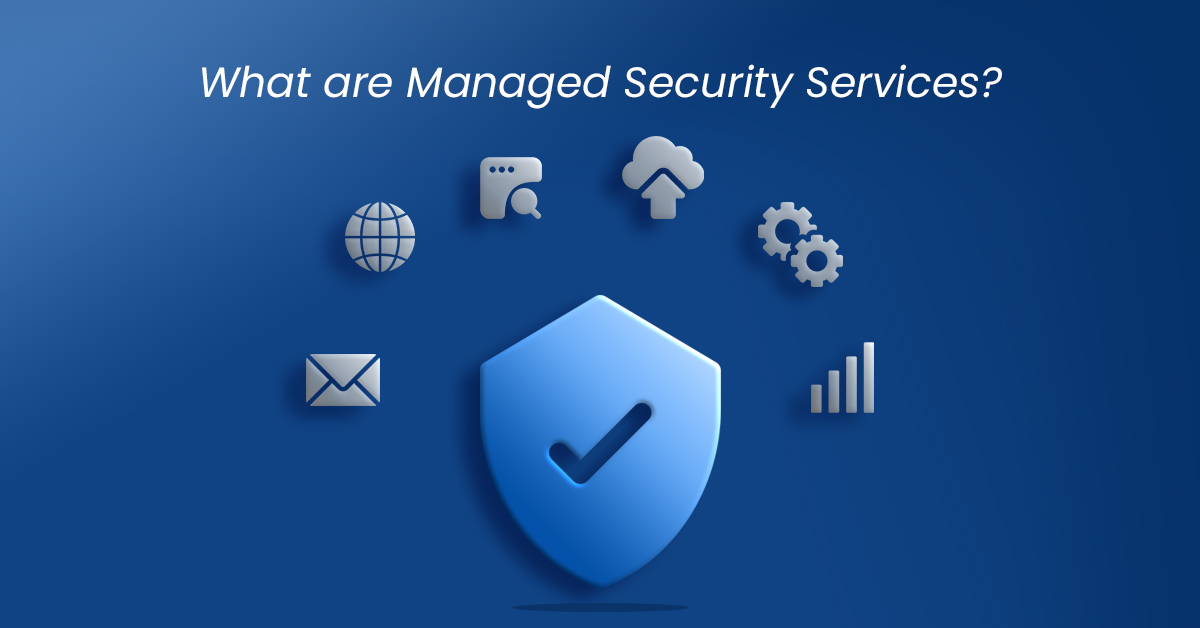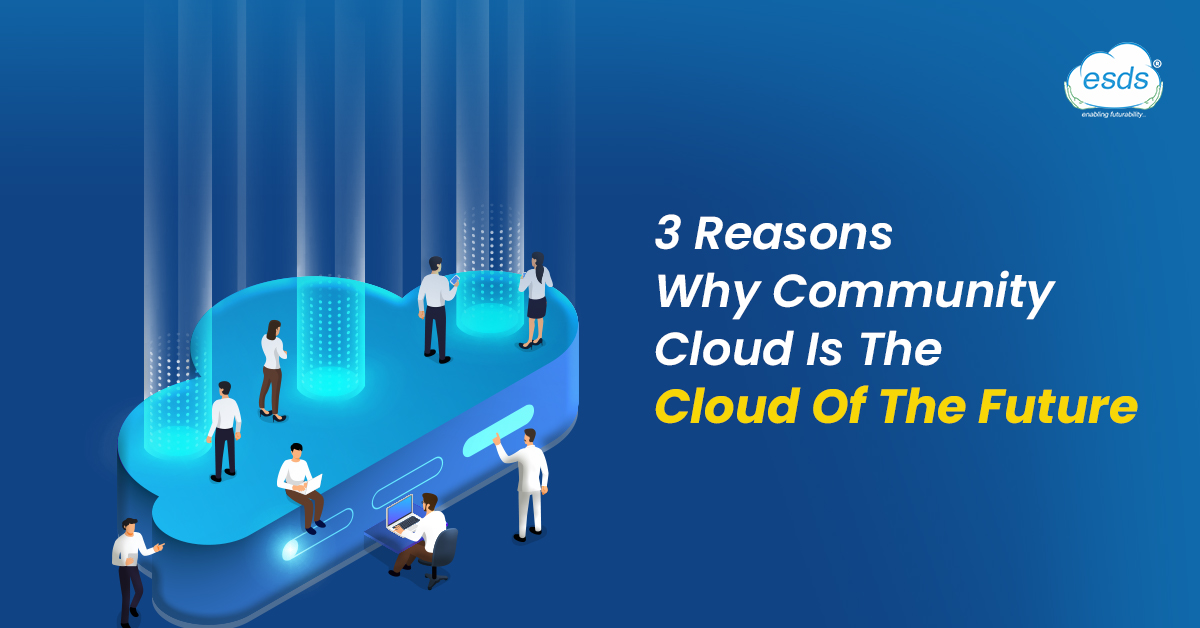As digital transformation is rapidly accelerating, more businesses are adapting to this current trend. Now the hybrid work environment is also catching up, organizations are faced with new challenges as we are steering away from the traditional network infrastructure. While the hybrid work model comes with its own set of comfort, flexibility, and productivity it also brings in certain risks and complexity. A majority of the staff is working remotely, and control over data and its security has become less rigid leaving the vulnerabilities exposed. Now how to keep the security intact and not let the vulnerabilities prone to hackers? Cybersecurity Mesh, which acts as a cyber-defense strategy with a more holistic approach. While regular security practices use a single perimeter to secure an entire IT environment, Cybersecurity Mesh on the other hand secures each device with its perimeter independently.
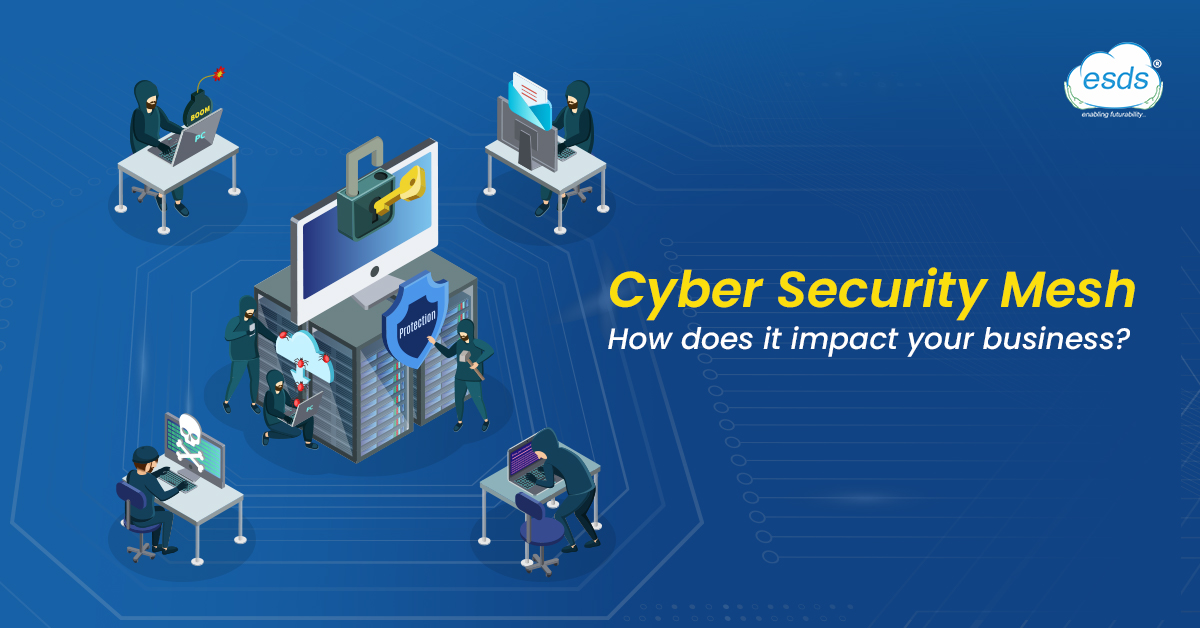
The traditional network perimeter has now become a diverse network that manages infrastructure, remote machines, and their uses, cloud technologies along with IoT devices. Organizations that are adapting to this approach with their remote work model gain access to data and more control over policies implementing new technologies. Industries such as banking, manufacturing, or government are still very much following the traditional practice. Businesses of larger sizes have complex IT architecture hence they need a more distributed model. To run the business smoothly in today’s competitive market organizations are inching more towards a data processing edge and relying on multiple cloud implementations.
Now that we have understood what Cybersecurity Mesh is, let’s understand its top benefits…
What is the main purpose of Cybersecurity Mesh also known as a Cyber Security Mesh Architecture CSMA for an organization?
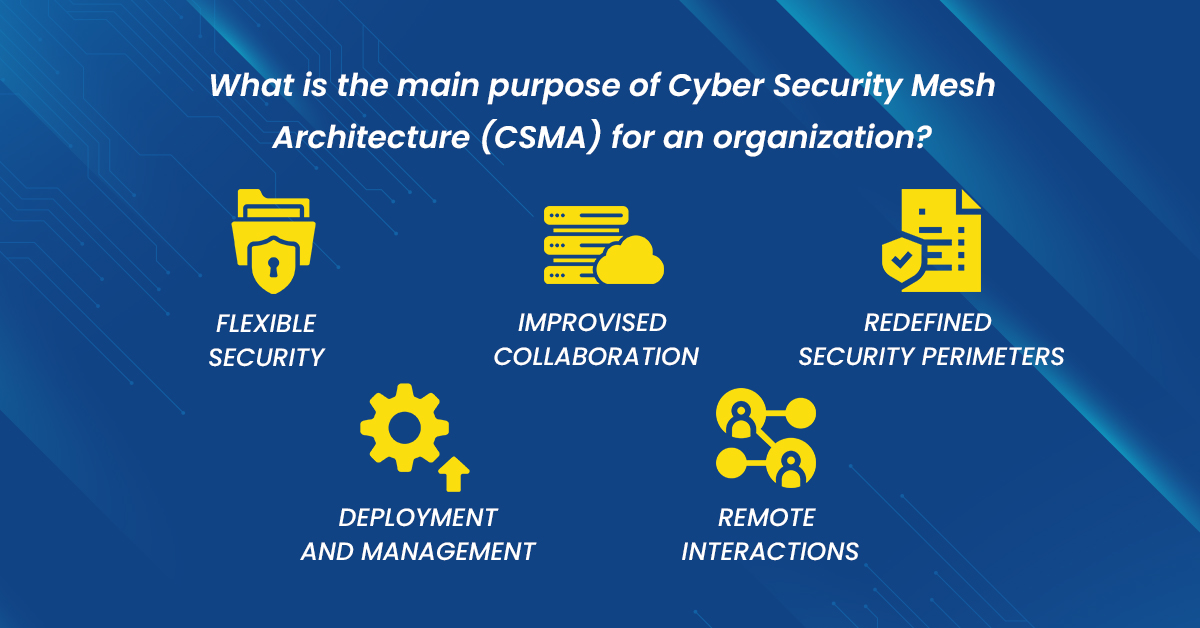
To provide the best of cyber security it takes the approach of helping organizations evolve to the new and latest security systems rather than the outdated ones. The crucial aspects of it include increasing the operability of various security tools while improving their agility and strengthening the overall security systems. Given the market pace and unpredictability, with the help is cybersecurity mesh organizations get a more distributed architectural approach. This also helps in getting a standardized responsive security pattern. Apart from the basic important aspects such as scalability, flexibility, and more reliable, Cybersecurity Mesh also prevents the network from hackers.

